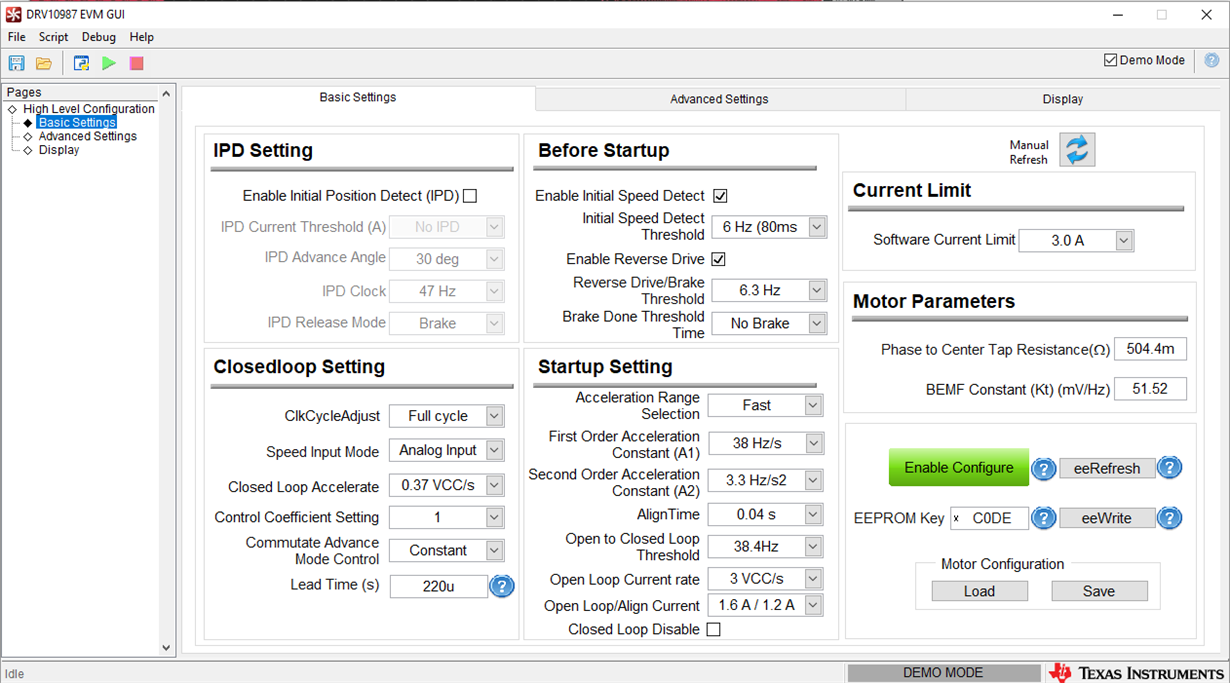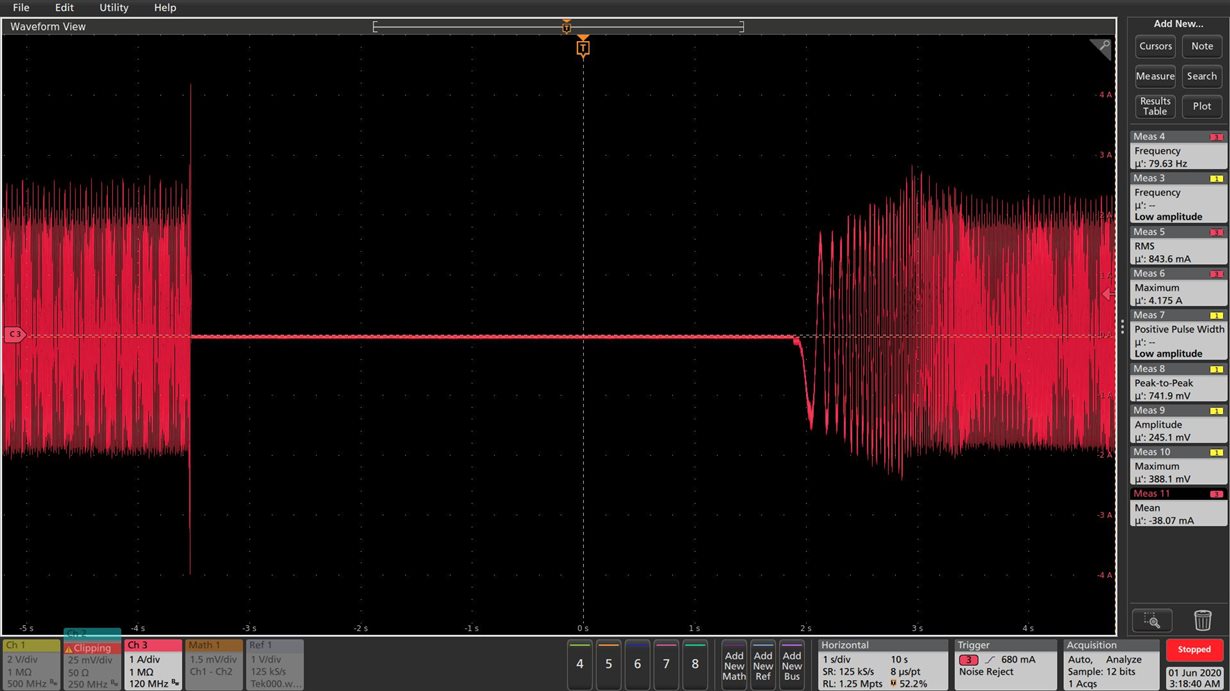Other Parts Discussed in Thread: DRV8308, DRV8306, DRV10970, DRV8312, DRV8308EVM
Hi,
We're using DRV10987 to drive NEMA17, 3-phase BLDC motor. Motor MPN: GM42BLF40-128-SJ-126 (gemsmotor http://gemsmotor.com/nema-17-square-brushless-dc-motor)
Motor enters into overcurrent protection mode (DRV10987's spec: 3.5A - 4.25A - 5.5A) while running application. This event occurs when there is need of sudden surge in required torque as motor needs to run at back pressure of -5 PSI (application case). Scope capture attached for phase current on one of phase winding and also, EEPROM configuration file attached
Questions:
- How to avoid overcurrent protection senarios?
- Is any acceleration factor is to be changed? any other EEPROM parameter is to be changed?
- Any ferrite bead will help in series with motor's UVW terminals
Operating condition:
- Peak transient current = 3.5A - 4A
- Average current: 1.5A rms
- Vcc = 12.56V
- SPEED voltage : 1.58V
- Motor speed: Approx. 90-100Hz (as per GUI)
- Phase to center Tap resistance = 504.4mOhm (1 ohm/2, Star Winding connection)
- BEMF constant, Kt = 51.55 mV/Hz
- Software current limit = 3A
- Lock detect: current limit check box = OFF, Current Limit for Lock Detection = 3.2A, lock detection control = Range2
I will send some more scope captures tomorrow -
1) VCC voltage and phase current transient rise (zoom scale)




